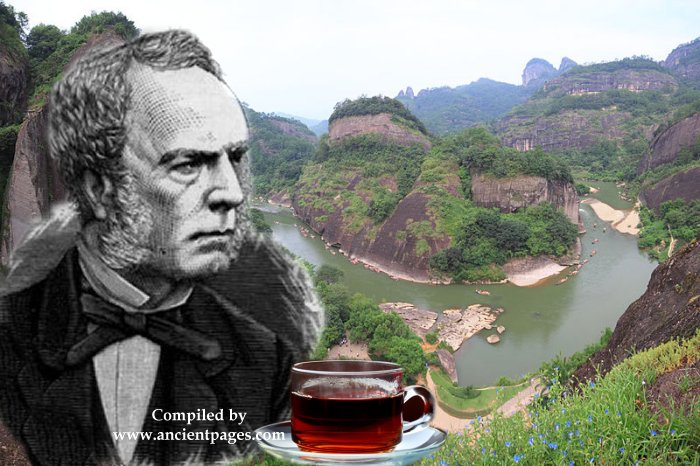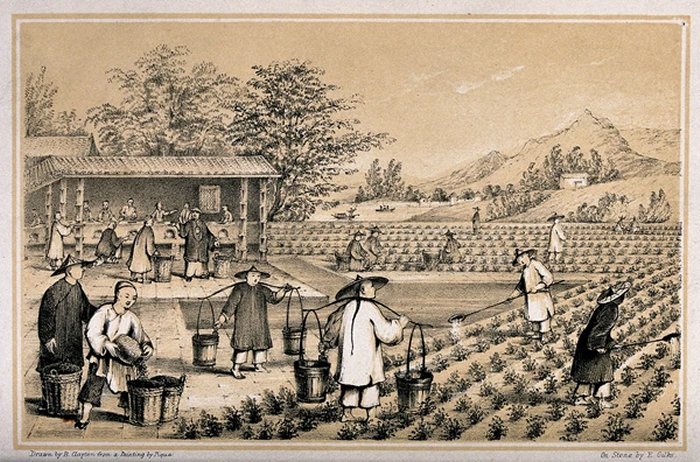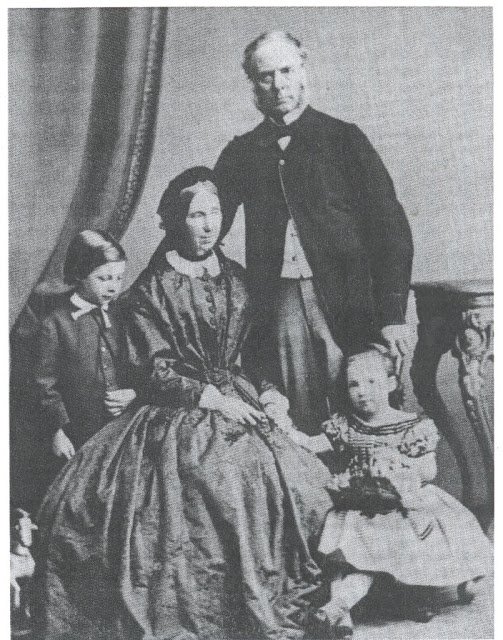Robert Fortune’s Dangerous Mission To Obtain Tea From The Chinese
A. Sutherland - AncientPages.com - After four months, the Scottish botanist Robert Fortune reached Shanghai, China. It was a hot September day in 1848, but he had no time to rest.
Robert Fortune must turn into Chinese with everything it means in appearance, clothing, speech, and behavior, and he had to create his new identity.
He would operate in disguise as a Chinese official to blend in with the surroundings and to be able to spy.
His mission was dangerous. It was a spy mission during which Fortune had to steal 13 thousand tea seedlings of Chinese tea plants (Camellia sinensis) from China to India on behalf of the British East India Company.
So he changed his name to Sing Wang (means: 'brilliant flower'), shaved his head, and then grew a pigtail. He learned to eat with chopsticks, spoke Mandarin, and wore Chinese clothes to blend with the locals better.
He was brave enough to fight pirates who attacked him on one of his visits.
Everything began on May 7, 1848. Fortune was working with the plants at Chelsea Physic Garden, London when he was suddenly visited by Professor John Forbes Boyle, a famous botanist and adviser at the East India Company.
Fortune must learn how the ancient Chinese produced tea, but it was a secret. Credit: Wellcome Collection - CC BY 4.0
He wondered if Fortune might think of going out for tea-hunting in China. The conditions were highly generous; Fortune would get 500 pounds - five times as much as he earned in the Chelsea garden.
It was a tempting offer, and he agreed.
Fortune Travels To China On A Dangerous Mission
Fortune understood his mission could result in a death sentence if he were caught as a spy. China was a closed nation, and spying on foreigners attempting to steal the nation's secret knowledge of tea production would be executed without hesitation.
Fortune had previously visited China and discovered that green and black tea come from the same plant, but he didn't know much more.
The money was tempting, so he left his wife and two children and traveled to China. He was slightly worried that his height would attract people's attention. Otherwise, he looked like the Chinese traveling from a distant province on the other side of the Great Wall. He believed this answer should satisfy the curious ones.
In October 1848, Fortune reached the first tea factory at the Yangtze River. His disguise was sufficient, and no one suspected he was a foreigner.
To the factory manager, Fortune was presented as Mr. Sing Wang", the translator's companion who traveled far to admire and learn more about the fantastic tea production. The proud manager was delighted to hear his workers' tea was appreciated and kindly offered a guiding factory tour.
Well, inside the factory, Fortune now has the chance to learn how the production proceeds. He is surprised to see some of the tea manufacturers have blue fingers and is ashamed when he is told the reason.
Robert Fortune (1812 - 1880) and his family. Credit: Public Domain
The manager explained that the Chinese mix blue and yellow dye with the dried tea leaves. He adds that the British pay a higher price for tea with an intense green color. Fortune feels embarrassed and understands the British must appear barbaric to the Chinese, but he focuses on his mission to collect tea plants and seeds for export to India.
The East India Company had also ordered him to gather as much information as possible about Chinese tea production. Fortune is determined to fulfill his mission even if the risk is high and his life is at stake.
Having left the tea factory, Fortune asks his guide and interpreter to show him places where one can find the finest tea leaves. His guide takes him to Anhui, an eastern Chinese province, an essential agricultural region in tea production. There, Fortune spends time collecting tea plants. When his guide's father becomes slightly suspicious, Fortune gives him money to keep him quiet.
In January 1849, Fortune returned to Shanghai with knowledge of tea production and the collected plants and seeds. He telegrams the East India Company, informing them that his mission has been accomplished as planned.
The next step is to pack and deliver his stolen goods to India. Hopefully, his precious stolen treasure will reach India in good condition. Fortune places the 13,000 plants and 10,000 seeds inside a Wardian case, a small plant house invented in the mid-1800s to transport rare plant specimens.
A Disaster Happens
The journey between Calcutta and the Himalayas was long, but the plants could have survived without an employee from the East India Company. Obviously, not knowing what he was doing, the man opened the Wardian case and gave the plants water. His intentions were good, but half of the plants were destroyed, and none of the seeds could be saved.
How ironic that the East India Company ruined its own stolen goods.
Fortune Obtains The World's Finest Tea
Meanwhile, Fortunes was still in China and did not know about the disaster. He spent his time visiting many places where he could acquire information about the valuable Da Hong tea. This particular type of tea is considered one of the world's most desirable, expensive, and finest teas, and Fortune is determined to find out how he can get it back to England.
He learns that this tea is produced from leaves growing on three different bushes. The trouble is that Buddhist monks guard the tea bushes day and night. So, stealing anything is out of the question. Fortune must devise another idea, but fate is kind to him.
His new interpreter, Sing Hoo, loves to talk and boast. When Sing Hoo and Fortune visit the Buddhist monks who guard the precious tea bushes, Sing Hoo lies. He tells the monks that Fortune is a rich and respected man with many wives and a descendant of Genghis Khan (1162 - 1227), the great Mongolian leader. He also adds that Fortune is a close friend of the Chinese Emperor. No wonder the monks were impressed, and Fortune received baskets full of tea plants and seeds from the heavily guarded bushes.
Once again, Fortunes returns to Shanghai, where he is told about the destroyed delivery of the previously obtained plants. He is devastated but understands that he must better seal the plants this time. He packs the new plants and seeds between several soil layers and sends the transport to its final destination. Then, he orders eight experts to accompany him to the Himalayas. He will instruct them there to produce tea just like the Chinese do.
Fortune reached the Himalayas in 1851, and he was delighted that his two years as a spy had paid off.
India and Ceylon are large tea producers. It wouldn't have been easy to achieve without Fortune's daring mission. Some will call him a thief, but those who love tea are grateful that he spread Chinese secrets to other countries, giving people an extraordinary opportunity to enjoy a nice cup of tea.
The ancient history of tea goes back at least 3,000 years, if not more. Tea is today the world's second most-consumed drink after clean water. The next time you drink tea, give Robert Fortune a thought.
Written by – A. Sutherland - AncientPages.com Senior Staff Writer
Updated on December 3, 2023
Copyright © AncientPages.com All rights reserved. This material may not be published, broadcast, rewritten or redistributed in whole or part without the express written permission of AncientPages.com
Expand for referencesMore From Ancient Pages
-
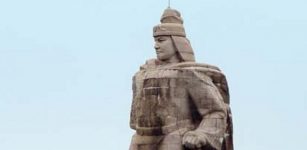 On This Day In History: Chinese General Koxinga Seizes The Island Of Taiwan – On Feb 1, 1662
News | Feb 1, 2017
On This Day In History: Chinese General Koxinga Seizes The Island Of Taiwan – On Feb 1, 1662
News | Feb 1, 2017 -
 Amanitore – Nubian Warrior Queen And Her Pyramids
Historical Figures | Aug 13, 2018
Amanitore – Nubian Warrior Queen And Her Pyramids
Historical Figures | Aug 13, 2018 -
 Pancho Villa – Mexico’s Robin Hood – A Ruthless Bandit Or A Hero?
Featured Stories | Jul 1, 2023
Pancho Villa – Mexico’s Robin Hood – A Ruthless Bandit Or A Hero?
Featured Stories | Jul 1, 2023 -
 Pottery Found On Jiigurru/Lizard Island Rewrites Aboriginal History
Archaeology | Apr 12, 2024
Pottery Found On Jiigurru/Lizard Island Rewrites Aboriginal History
Archaeology | Apr 12, 2024 -
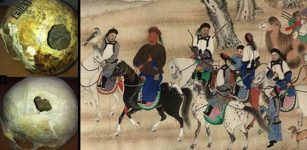 Siberia Had A Major Skull Surgery Center 2,500 Years Ago
Ancient History Facts | Jul 19, 2019
Siberia Had A Major Skull Surgery Center 2,500 Years Ago
Ancient History Facts | Jul 19, 2019 -
 Excavations At Oylum Höyük In Southeast Anatolia Near Syrian Border – Resumed
Archaeology | Jul 26, 2020
Excavations At Oylum Höyük In Southeast Anatolia Near Syrian Border – Resumed
Archaeology | Jul 26, 2020 -
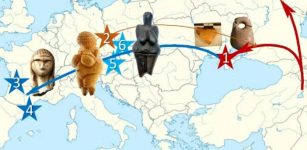 Ancient Skulls From Ukraine Reveal Early Modern Humans Came From The East
Archaeology | Nov 9, 2023
Ancient Skulls From Ukraine Reveal Early Modern Humans Came From The East
Archaeology | Nov 9, 2023 -
 Unexplained Visions Of Airmen – Strange Presence And Disturbances – Part 1
Featured Stories | Feb 6, 2020
Unexplained Visions Of Airmen – Strange Presence And Disturbances – Part 1
Featured Stories | Feb 6, 2020 -
 900-Year-Old Crypt At Old Dongola: Magical Inscriptions And Mysterious Signs Found
Archaeology | Sep 12, 2015
900-Year-Old Crypt At Old Dongola: Magical Inscriptions And Mysterious Signs Found
Archaeology | Sep 12, 2015 -
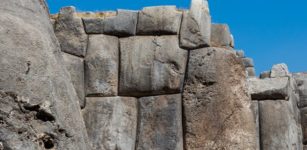 Mysterious Killke Culture Of Peru: Did They Construct Sacsayhuaman?
Civilizations | Mar 14, 2019
Mysterious Killke Culture Of Peru: Did They Construct Sacsayhuaman?
Civilizations | Mar 14, 2019 -
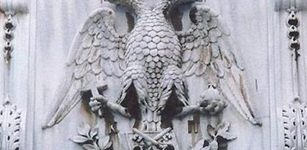 Mystery Of The Ancient Double-Headed Eagle Symbol
Ancient Symbols | Oct 11, 2017
Mystery Of The Ancient Double-Headed Eagle Symbol
Ancient Symbols | Oct 11, 2017 -
 Geomagnetic Fields Reveal The Truth Behind Biblical Narratives
Archaeology | Oct 25, 2022
Geomagnetic Fields Reveal The Truth Behind Biblical Narratives
Archaeology | Oct 25, 2022 -
 Yenikapı Excavations Reveal 8,500-Year-Old Artifacts
Archaeology | Jan 10, 2016
Yenikapı Excavations Reveal 8,500-Year-Old Artifacts
Archaeology | Jan 10, 2016 -
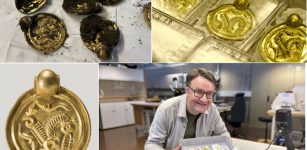 Largest Ancient Gold Treasure Of Its Kind Discovered In Stavanger, Norway
Archaeology | Sep 7, 2023
Largest Ancient Gold Treasure Of Its Kind Discovered In Stavanger, Norway
Archaeology | Sep 7, 2023 -
 Ancient European Buildings Form A Sacred Symbol When Viewed From The Air – Scientist Reveals
Ancient Symbols | Jun 15, 2018
Ancient European Buildings Form A Sacred Symbol When Viewed From The Air – Scientist Reveals
Ancient Symbols | Jun 15, 2018 -
 On This Day In History: Adolph Bandelier Swiss-American Who Studied The American Indian Cultures – Born – August 6, 1840
News | Aug 6, 2016
On This Day In History: Adolph Bandelier Swiss-American Who Studied The American Indian Cultures – Born – August 6, 1840
News | Aug 6, 2016 -
 Ancient Riddle Solved – Why Was Roman Concrete So Durable?
Archaeology | Jan 7, 2023
Ancient Riddle Solved – Why Was Roman Concrete So Durable?
Archaeology | Jan 7, 2023 -
 Mystery Surrounds Newly Discovered Bronze Age Burial In Southwest England
Archaeology | May 21, 2018
Mystery Surrounds Newly Discovered Bronze Age Burial In Southwest England
Archaeology | May 21, 2018 -
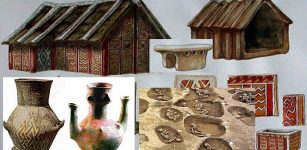 Lengyel Culture Of Neolithic Europe Was Amazingly Sophisticated
Civilizations | Apr 7, 2020
Lengyel Culture Of Neolithic Europe Was Amazingly Sophisticated
Civilizations | Apr 7, 2020 -
 Unexpected Discovery 130,000-Year-Old Neanderthal Stone Tools In Poland
Archaeology | Oct 30, 2023
Unexpected Discovery 130,000-Year-Old Neanderthal Stone Tools In Poland
Archaeology | Oct 30, 2023

